When first exposed to polymer bridge deck overlays, owners and designers often think one of two ways: there are so many, how do I decide, or polymers are all the same. Yes, there are different types of polymer overlays, a basic understanding of the different types and where/how they can be expected to succeed can help lead to more overall success. As for the other perception, polymer overlays are not all the same, and treating them as such will not lead to a quality outcome.
There are three major types of polymer bridge deck overlays in use in the US: Multi-layer Thin Polymer Overlays, Slurry Overlays, and Premixed Polymer overlays. The most successful examples of the various types have something in common, they were specified in a location and application that was appropriate for each. In future posts, we will dive deeper into the details of what makes some of these overlays work best. For now, we will provide an overview of the details and attributes of polymer overlays that can be specified.
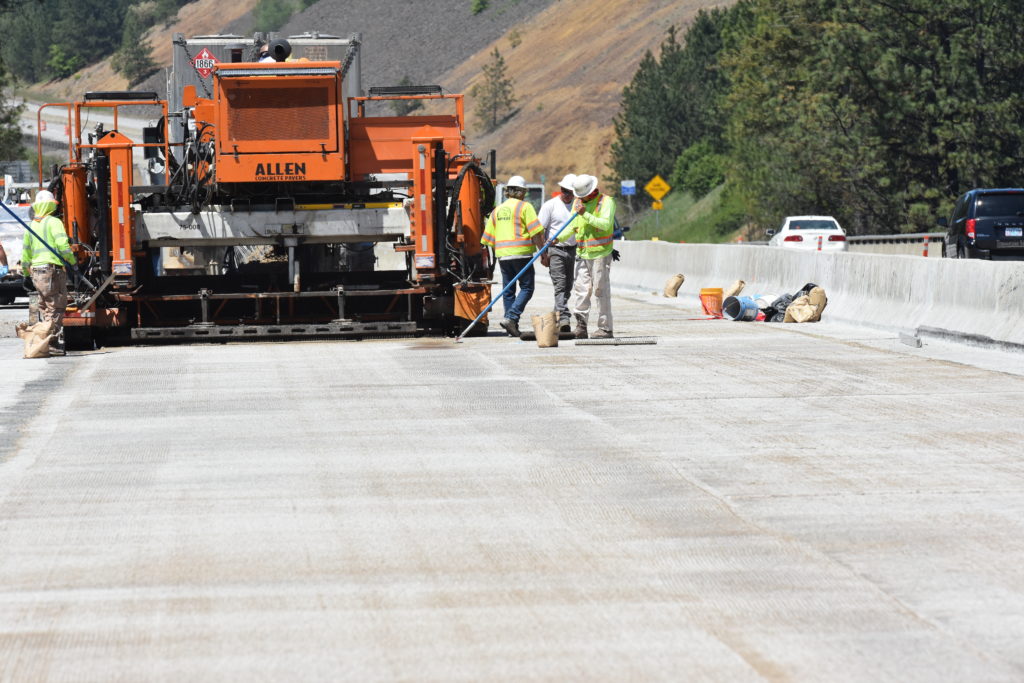
Multi-Layer Thin Polymer Overlay (TPO)
TPO’s consist of two layers of polymer binder and broadcast aggregate. The typical thickness after application of both layers is 3/8 inch. These can be used to protect the underlying substrate deck and increase skid resistance
The most common binder resin for TPO’s is epoxy, however, there are other options including polyester binder resin – which is used for our product KBP MLS. Epoxies can be changed through formulation to achieve desired properties, such as adding a urethane modifier, but the final properties of the overlay system remain largely similar.
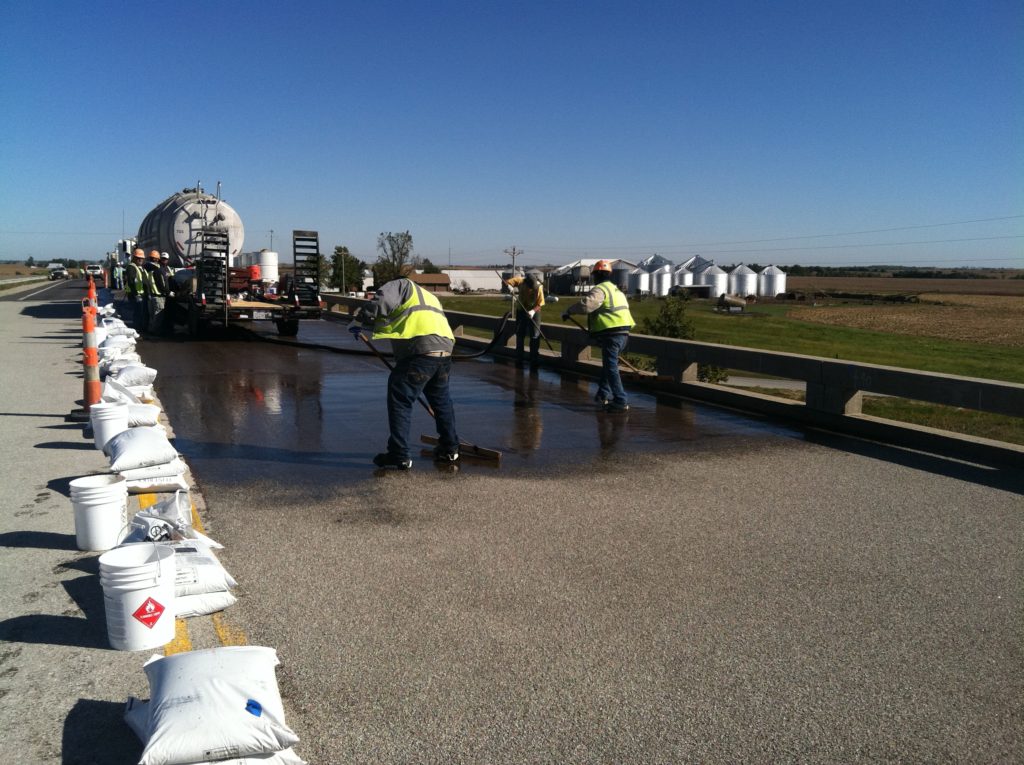
These overlays are easy to apply and can be either hand applied by mixing resin in buckets, distribution with squeegees, and hand broadcasting the aggregate. Or they can be machine applied using fully mechanized self-contained installation vehicles. A hybrid installation method involves plural component binder resin pumping which still involves squeegee distribution and pneumatic blowing of the aggregate. The materials tend to be impartial to the installation method, however, there can be a savings in installation cost for large scale projects when the more mechanized approaches are used.
Cure time can be relatively fast for TPO’s, especially in warm conditions. They tend to take longer to cure in the cold, or can not be applied at all, but most summer construction season temperatures are well suited to the typical resins used for these overlays. Ideally, both layers of a TPO should be completed prior to opening the surface to traffic. This means the process requires two waiting periods for cure time prior to completion, but in warmer conditions, this can still be completed within a single shift for a typical size bridge. The mechanized operations can make both layers more feasible in a shift for larger-scale installations.
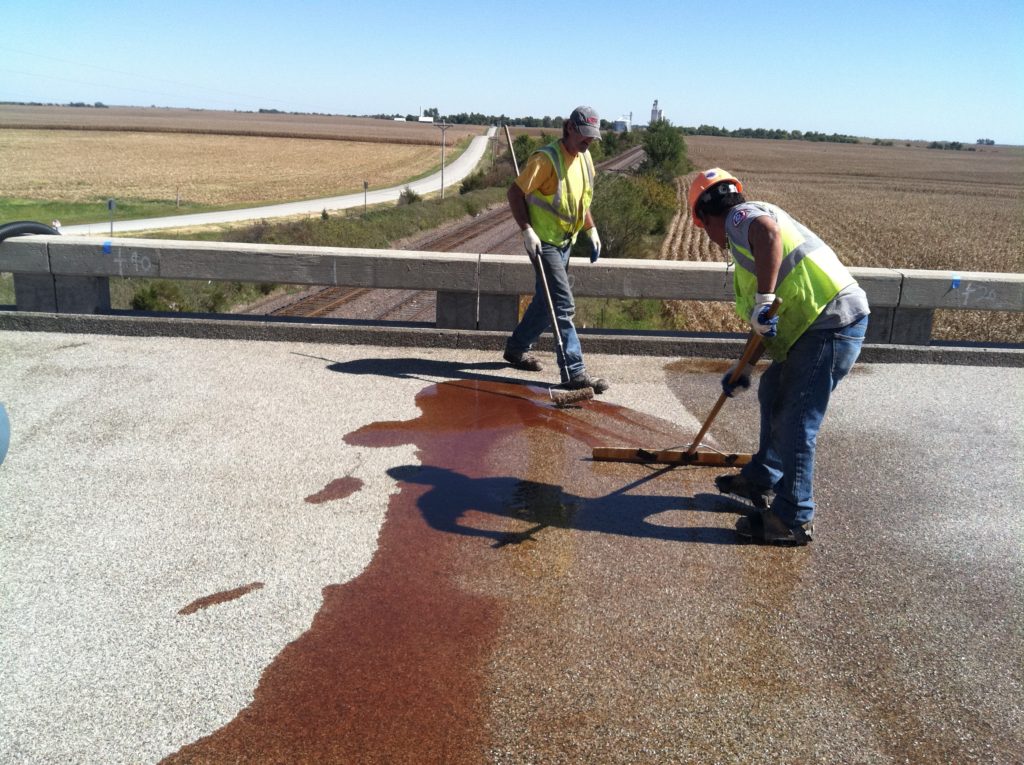 Like all polymer systems, and most other construction materials like concrete or asphalt, these overlays can not be placed in the rain. They should be placed on clean, dry substrate. Shot blasting is the most common means of cleaning a bridge deck to prepare for a TPO installation.
Like all polymer systems, and most other construction materials like concrete or asphalt, these overlays can not be placed in the rain. They should be placed on clean, dry substrate. Shot blasting is the most common means of cleaning a bridge deck to prepare for a TPO installation.
The service life of a TPO varies greatly and can be extended significantly by specifying within certain very critical parameters that will be discussed in a future post. Generally, TPO’s last 3 – 10 years depending on the conditions of the structure, traffic, and environment. Some have lasted longer when the conditions lend well to the system, or through maintenance and partial replacement as needed.
Slurry Polymer Overlays
Not in widespread use currently in the US, but still seen at times, slurry polymer overlays are typically ½ – 5/8-inch-thick, applied in multiple steps. Typically, the binder resin is Methyl Methacrylate (MMA).
MMA slurries can be mixed in buckets with a drill mixer, or in a larger batch mixer. Grade is often established through gauge rake distribution to a single uniform thickness. The final step is the application of a final coat of resin to seal in the surface friction aggregate.
MMA Slurry overlays can cure very quickly and can be placed even in cold conditions below freezing. However, even though the material itself cures rapidly, there are three distinct steps (primer, slurry, top coat) that each require a waiting period for their sufficient cure.
The service life of MMA Slurry overlays is not as widely documented as it is for the other polymer overlay options. This may be a function of their limited use and it is affected by the same factors that can help or hurt TPO’s. I am sure any responsible supplier of MMA Slurry would be glad to offer some guidance on this subject.
Premixed Polymer Overlays
Premixed Polymer Overlays are made up of graded aggregate and resin binder. They are mixed on site prior to placement much like traditional concrete but include no cement or water. This overlay can be used to protect the underlying substrate deck and provide a wearing surface.
Unlike the TPO and slurry overlays, grade on a structure can be maintained or changed using a premixed overlay. These overlays are placed to proposed grade using forming or slip-forming, finishing similarly to traditional concrete. Thickness minimum and maximum can vary for different premixed systems. Epoxy binder resins have been used for premixed overlays periodically throughout the past few decades but tend to fall out of favor due to early surface abrasion and incompatibility with the substrate concrete. The most common premixed overlay available currently is Kwik Bond Polymers PPC 1121 Polyester Polymer Concrete, which features a polyester binder resin. This system can be placed at any thickness from ¾ in and up. Grade correction through variable thickness placement and any placements of appreciable thickness are common for the PPC 1121 system but should only be attempted with materials that are formulated for that application and have a proven record of success.
Premixed overlays can be textured to suit the needs of the structure and location. When the system features a well-controlled resin content, the overlay can be mechanically saw-cut grooved or spring steel tined and achieve very high skid resistance and wear resistance for the life of the surface. Diamond grinding is also an option for these overlays.
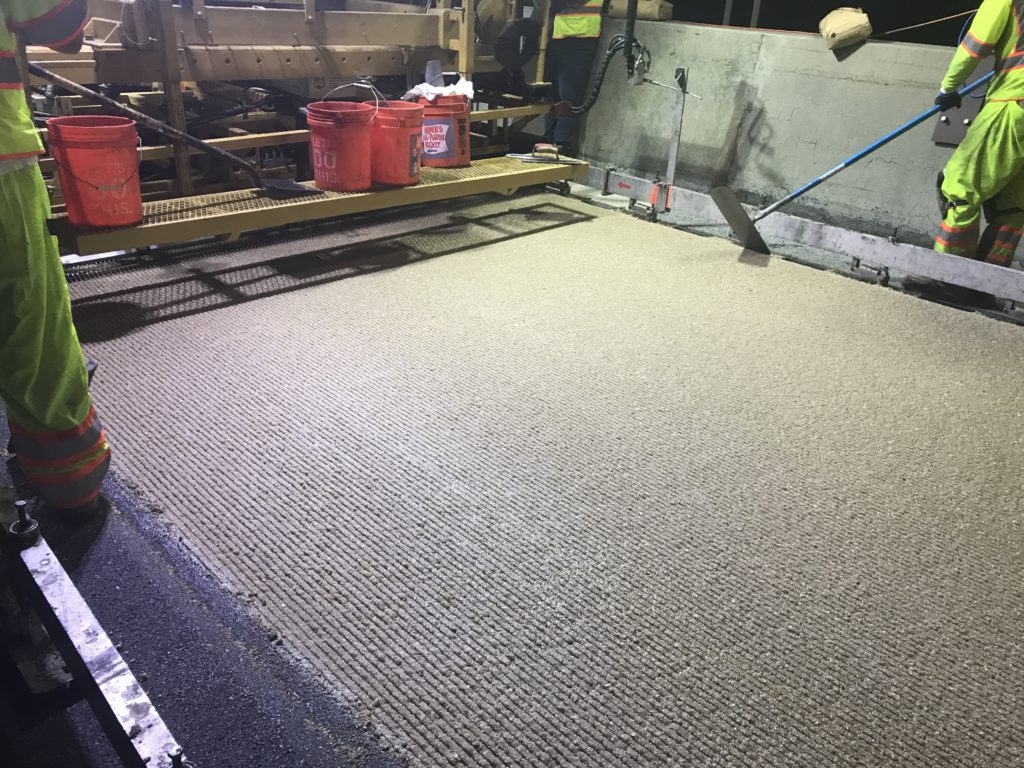
Cure time of premixed polymer overlays varies based on the type of binder resin. The polyester binder resin in PPC 1121 is controllable and rapid curing, able to return traffic two hours after placement in all allowable conditions. Typical overlay conditions for PPC 1121 include temperatures between 40° – 100° F, patching and joint header installations can be placed in a much wider range of temperatures while still returning traffic in two hours.
Because the properties of different premixed overlays can vary greatly, so does the anticipated service life. The expectation of a new or experimental system should not be assumed based on the history of another. The PPC 1121 system has been in use for over 30 years with near zero installations reaching the end of their functional life or requiring significant maintenance. The most conservative anticipated service life for this overlay in the harshest conditions would be 20 years. However, in most cases it will last much longer, a reasonable service life based on history would be 30+ years.
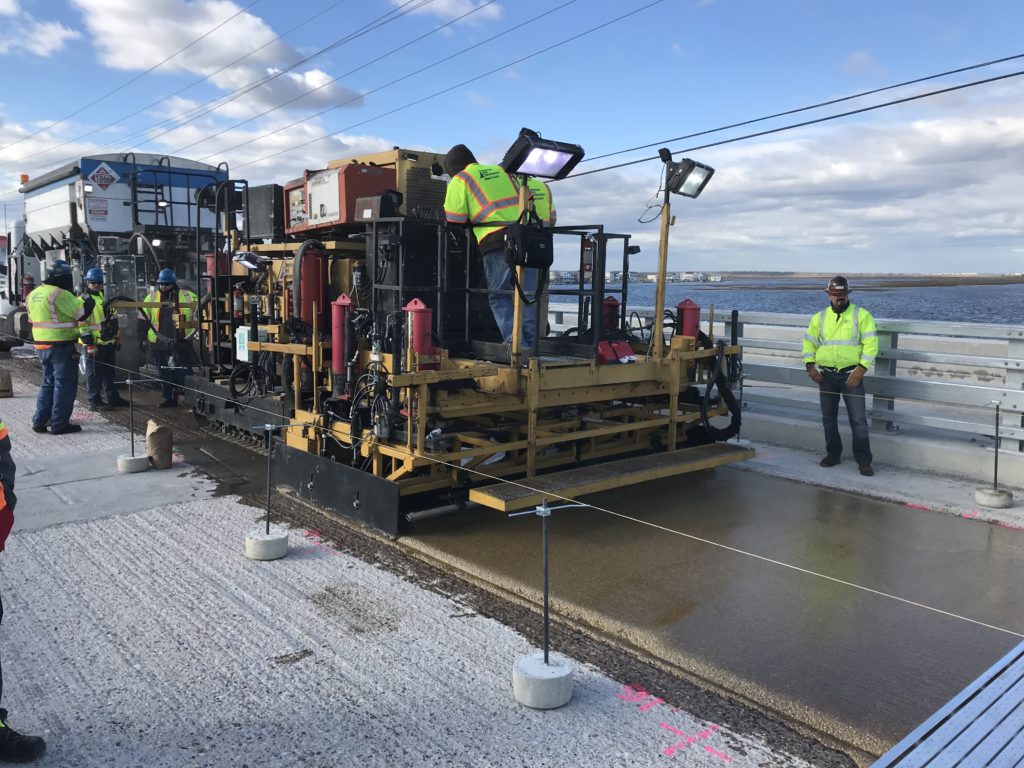
Summary
Polymer bridge deck overlays are easy to specify, readily available, and have ample history to show their successes. When specified in the right conditions for the chosen style of overlay, they can achieve their anticipated service life. A basic understanding of the conditions and issues can help a designer to select the right solution for the needs of a given structure. In a future post, we will delve further into the considerations necessary to achieve success with each type of polymer overlay. In the meantime, please feel free to reach out to one of the experts at Kwik Bond Polymers for guidance through the selection and specification of polymer overlays, we are here to help.